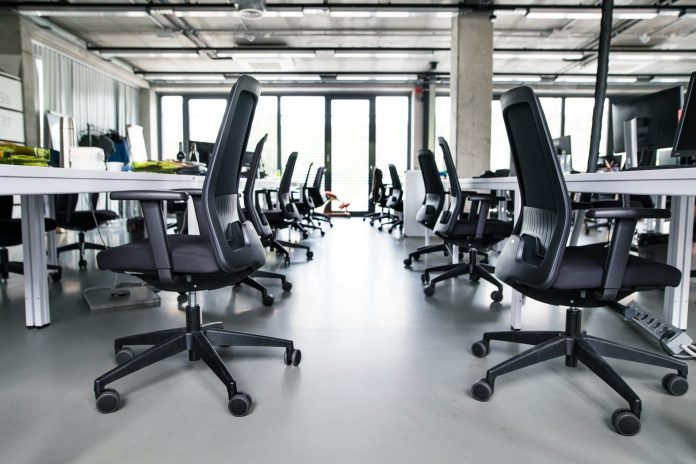In today’s fast-paced work environment, businesses are constantly looking for effective ways to boost productivity and support employee wellbeing. One often overlooked factor that can make a significant difference is the quality of office furniture. Choosing ergonomic options isn’t just about comfort. It’s a smart investment that helps employees work more efficiently while reducing the risk of strain and injury. Over time, this can lead to higher performance, better morale, and fewer sick days.
What is Ergonomic Office Furniture?
Ergonomic furniture is designed with human anatomy in mind. It helps maintain proper posture, reduces physical stress, and adapts to the user’s needs. Common examples include:
-
Adjustable office chairs with lumbar support
-
Sit-stand desks
-
Monitor arms and footrests
-
Ergonomic keyboards and mice
The goal is to create a workspace that supports the body throughout the day, rather than forcing it into unnatural or static positions.
The Role of Ergonomic Desks in a Healthy Workspace
While ergonomic chairs tend to get most of the attention, ergonomic desks play an equally important role in promoting comfort and reducing workplace strain. The wrong desk height or layout can lead to poor posture, eye strain, and repetitive stress injuries over time.
Ergonomic desks and height-adjustable desks offer key benefits such as:
-
Encourage movement throughout the day: Sit-stand desks allow employees to alternate between sitting and standing, which helps improve circulation and reduce fatigue.
-
Improved posture and spinal alignment: Desks at the proper height help users maintain neutral wrist and elbow positions, reducing strain on joints and muscles.
-
Customisable for individual needs: Adjustable desks accommodate users of different heights and working styles, which is essential in shared or hot-desking environments.
-
Boost energy and focus: Regular movement, even something as simple as standing for part of the day, can increase energy levels and reduce that mid-afternoon slump.
Integrating ergonomic desks into your workplace supports not only individual comfort but also a more dynamic, health-conscious office culture.
The Link Between Ergonomics and Productivity
When employees are comfortable in their working space, they can focus better and work more efficiently. Sitting in a poorly designed chair or hunching over a desk can lead to discomfort, fatigue, and even pain. These can all become distractions reducing productivity.
Here’s how ergonomic furniture improves productivity:
-
Better focus and energy levels: Good posture improves circulation and oxygen flow, helping employees stay alert.
-
Fewer breaks from discomfort: When workers aren’t constantly adjusting their chairs or stretching sore muscles, they stay on task longer.
-
Customisable setups: Adjustable furniture allows each employee to tailor their workspace to fit their body and tasks, reducing frustration and increasing efficiency.
Reducing Sick Days Through Better Support
Musculoskeletal disorders (MSDs) like back pain, neck strain, and carpal tunnel syndrome are among the leading causes of work-related injuries and absenteeism. In the UK, for example, the Health and Safety Executive (HSE) reports that MSDs account for millions of lost workdays every year.
Ergonomic office furniture helps reduce the risk of these injuries by encouraging proper alignment and movement. Features like lumbar support, armrests, and height-adjustable desks reduce strain on joints and muscles, which means employees are less likely to need time off due to chronic pain or injury.
Supporting Long-Term Employee Health
Beyond immediate productivity and absence-related benefits, ergonomic setups support long-term health and job satisfaction. Employees who feel their employer cares about their comfort and wellbeing are more likely to feel valued, engaged, and loyal to the company. This can lead to lower turnover rates and better team morale.
Investing in Ergonomics Pays Off
While ergonomic furniture may seem more expensive upfront than standard alternatives, it’s a long-term investment with measurable returns. Companies that invest in employee comfort often see:
-
Higher work output
-
Fewer sick days
-
Reduced compensation claims
-
Better employee retention
Ergonomic furniture is not just about comfort. With the cost of sick days and lost productivity in mind, it makes strategic sense for any workplace.
Key Takeaways
Ergonomic office furniture is more than just a perk; it offers a practical solution to many of the common challenges faced in today’s workplaces. By creating an environment where employees can work comfortably and safely, businesses can boost performance, reduce health-related absences, and build a happier, healthier team. When you are outfitting your office, investing in ergonomics is a decision that genuinely supports your bottom line.



 Bitcoin
Bitcoin  Ethereum
Ethereum  Tether
Tether  XRP
XRP  USDC
USDC  Solana
Solana  TRON
TRON  Lido Staked Ether
Lido Staked Ether  Cardano
Cardano  Avalanche
Avalanche  Toncoin
Toncoin